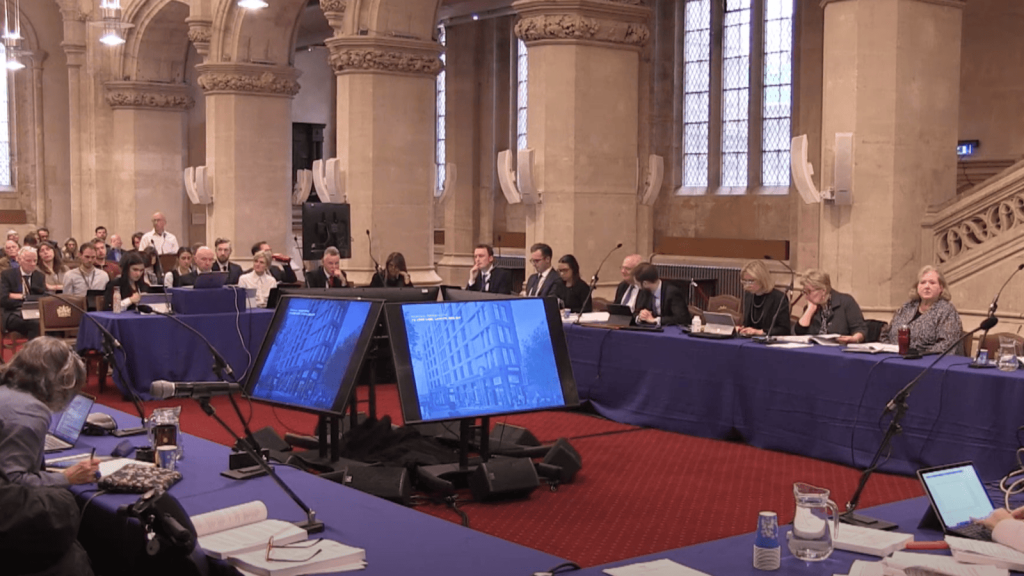Read next
The latest news, updates and expert views for ambitious, high-achieving and purpose-driven homeowners and property entrepreneurs.


Since the NPPF (December 2024) refresh, the presumption in favour of sustainable development is no longer a footnote - it’s the fulcrum. Widespread plan-making failures and delivery shortfalls have strengthened its pull, creating unprecedented opportunities for developers.
The delivery picture is stark: over sixty authorities are now caught by Housing Delivery Test under-performance and around 190 cannot show a five-year housing land supply, meaning nearly half of English LPAs are exposed to the tilted balance. The refusal bar has also risen: decision-makers now need strong reasons, not merely clear ones, to say no.
In this article, you will learn how Paragraph 11(d) works in practice: what the tilted balance means, which material considerations matter, and the main triggers - five-year housing land supply shortfalls and the Housing Delivery Test under the December 2024 NPPF.
You’ll see how inspectors are applying the updated wording, with a stronger focus on sustainable locations, effective use of land, design quality and affordable housing.
We’ll also explain Labour’s reforms, including Grey Belt and the “golden rules.” Finally, we cover what the PPG says about deliverability and how to build a strong case on viability, planning obligations, Section 106 and CIL.
Ready to get started?
The presumption in favour of sustainable development is a core planning principle in the National Planning Policy Framework (NPPF). It means planning permission should be granted unless the adverse impacts of a proposal significantly and demonstrably outweigh the benefits, or specific protected policies provide a clear reason for refusal.
This presumption is engaged when a local planning authority’s policies are out of date, particularly if it cannot show a five-tear supply of housing land or has a record of poor delivery. In such cases, the tilted balance applies, making the system lean towards approval of well-designed, benefit-led schemes.
In effect, this powerful mechanism operates as planning's built-in problem-solver, designed to unlock well-designed schemes when councils' plans are lagging or delivery is off track.

The presumption operates on two complementary fronts, each serving different but related purposes in the planning system:
In plan-making, the presumption pressures local authorities to allocate sufficient, well-located land for homes, jobs and infrastructure. Councils must plan for sustainable growth and meet housing needs unless there are genuinely exceptional reasons not to.
This means:
Identifying enough deliverable sites with realistic timescales
Planning infrastructure properly to support development
Setting clear design standards that will stand up to scrutiny
Ensuring plans pass examination in public and demonstrate soundness
For planning decisions - which matters most to developers - the presumption guides planning officers and inspectors where local policy carries limited weight, providing sound applications with a clearer route to approval:

The presumption doesn't override the normal planning system but works within it. Councils still must follow Section 38(6) of the Planning Act, which requires decisions to follow the local plan unless material considerations indicate otherwise.
But here’s the crucial part. When plans are failing, the presumption tips the scales towards approval for schemes that deliver genuine benefits.
This creates a structured hierarchy where the presumption serves as both incentive for effective plan-making and a safety valve for development delivery when plans prove inadequate.
The December 2024 reforms to the NPPF marked the most significant recalibration of the planning system in over a decade with the new planning rules.
By strengthening the presumption in favour of sustainable development, expanding its reach through widespread housing delivery and supply failures, and reshaping its legal interpretation, the reforms shifted the balance firmly toward enabling new development.
For developers, this moment represents both unprecedented opportunity and heightened complexity, as success now depends on navigating a system where planning failures and acute housing need create powerful grounds for approval even in sensitive contexts.
The presumption in favour of sustainable development was dramatically strengthened through the December 2024 NPPF reforms, creating unprecedented opportunities for developers.
Simply put, the legal threshold shifted from requiring "clear reasons" to "strong reasons" for refusal, fundamentally tilting the balance toward development approval.
The scale of planning system failure has expanded presumption opportunities significantly.
Let’s take a closer look:
Recent case law developments have both strengthened and complicated presumption application.
In fact, while the general presumption has been reinforced, flood risk applications now require enhanced sequential test compliance, requiring developers to navigate more rigorous technical requirements while capitalising on expanded opportunities.

Labour's planning reforms represent the most significant evolution of the presumption framework since its introduction in 2012.
Rather than replacing the existing system, these reforms amplify and refine it, creating additional triggers through grey belt policy while strengthening the benefits that receive particular regard under the tilted balance.
The December 2024 NPPF implementation, combined with mandatory housing targets and regional planning revival, signals a decisive shift towards delivery-focused planning that rewards schemes demonstrating genuine sustainability credentials.
The updated NPPF maintained the familiar structure of Paragraph 11 while making crucial enhancements:
The direction of travel is clear: growth with quality. When delivery falters, the system places real weight on schemes that can bring well-designed homes forward quickly.

"Grey belt" provides a focused route to unlock lower-quality or previously developed land within the Green Belt under clear, high-standard conditions. This represents a fundamental shift in Green Belt policy, creating structured pathways for development that were previously considered impossible.
In presumption terms, what does this change?
Grey Belt changes the content of the benefits you can put on the scales under Paragraph 11(d) (ii). If you can reach the tilted balance (i.e., Green Belt policy under Paragraph 11(d) (i) does not provide a strong reason to refuse), a compliant Grey Belt proposal can carry very significant positive weight.
The "Golden Rules" establish mandatory requirements for major development proposals, addressing concerns that the presumption enables development without adequate community provision:
The Golden Rules framework includes enhanced enforcement mechanisms through planning conditions and legal agreements. Section 106 agreements must secure affordable housing delivery, infrastructure provision, and environmental mitigation with clear triggers and monitoring requirements.

At the heart of Labour’s reforms lies a new delivery framework designed to shift the planning system from policy aspiration to measurable outcomes. By coupling mandatory housing targets with strengthened enforcement mechanisms, the government has moved decisively to reduce local authority discretion and ensure that assessed housing need translates into real homes on the ground.
This approach hardwires delivery into the system: targets are nationally consistent yet locally responsive, enforcement is credible and escalating, and integration with the presumption ensures that underperformance triggers tangible opportunities for development approval.
It's a decisive break from the past. The framework represents a decisive break from the previous era of soft targets and partial compliance, replacing it with a rules-based system where delivery failure directly empowers sustainable schemes.
Labour's approach represents significant strengthening of the existing framework, with mandatory housing targets accompanied by enhanced enforcement mechanisms. The targets use revised methodology taking greater account of affordability pressures and demographic change, with reduced local authority discretion to argue constraints prevent meeting assessed needs.
The enforcement framework includes powers for central government intervention where local authorities fail to meet targets:
The integration of mandatory targets with the presumption creates multiple pressure points for development approval. Authorities face presumption application both for failing to meet five-year land supply requirements and Housing Delivery Test requirements, ensuring housing targets translate into actual delivery rather than merely planning permissions.

Labour’s reforms reintroduce a tier of planning that had been dismantled under the localism agenda, restoring the ability to plan at the scale of real housing markets and functional economic areas. By reviving regional frameworks, the government aims to overcome fragmented local decision-making and provide a platform for aligning housing, transport, environmental, and economic priorities.
What's the big picture?
This shift marks a decisive move back towards coordinated spatial planning, where statutory regional authorities are tasked with delivering growth that is both ambitious and sustainable. The framework promises stronger housing delivery through cross-boundary allocations, better integration of infrastructure with development, and a clearer mechanism for balancing environmental protection with economic opportunity.
Labour's commitment to reviving regional strategic planning represents a significant departure from the localism agenda pursued since 2010.
At its core, the policy recognises that housing markets, transport systems, and environmental challenges operate at scales larger than individual local authority boundaries.
The proposed framework operates through statutory regional planning authorities with democratic accountability through:
The revival of regional planning is matched by a significant expansion of powers for regional authorities. Moving beyond the advisory role of previous frameworks, these bodies are now positioned as statutory decision-makers with the ability to shape housing delivery, infrastructure provision, and economic growth at scale.
The emphasis is clear: integration. This means ensuring transport, utilities, housing, and environmental priorities are aligned across boundaries, rather than fragmented by local discretion. By equipping regional authorities with stronger statutory tools and clear democratic mandates, the reforms aim to deliver more consistent, efficient, and sustainable outcomes while retaining transparency and accountability through consultation and assessment processes.

The five-year housing land supply (5YHLS) test has long been central to the operation of the presumption in favour of sustainable development. The December 2024 reforms have both tightened the requirements and raised the stakes, transforming what was once a technical compliance exercise into the single most important driver of development opportunity.
By reintroducing buffers, eliminating workarounds, and revising the standard method to increase assessed need, the reforms expose a far greater number of authorities to presumption risk.
For local planning authorities, this means sustained pressure to keep allocations deliverable and evidence robust.
For developers, it means the broadest window of opportunity in a generation: the chance to secure permission where supply failure renders local policies out of date, provided schemes can demonstrate genuine deliverability, sustainability, and community benefit.
The December 2024 reforms have tightened five-year supply requirements:
The proactive path for local authorities is clear:
For developers, this creates expanded opportunities where authorities fail to maintain adequate supply or delivery performance, while rewarding schemes that can demonstrate genuine deliverability and community benefit.
The five-year housing land supply requirement has become the most significant trigger for presumption application, with approximately 61% of local planning authorities unable to demonstrate adequate supply.
This represents a systematic crisis that has created the largest development opportunity in a generation - transforming previously constrained markets into presumption-enabled territories where quality schemes can secure approval.
For developers, this crisis represents an unprecedented opportunity. The widespread nature of supply failures means that presumption opportunities exist across diverse market conditions, from high-value southern locations to regeneration areas in the north.
The key is recognising that supply failure creates a fundamentally different planning environment where benefit-focused assessment replaces policy compliance as the primary test.
If an authority cannot demonstrate a deliverable five-year supply, the NPPF treats its most important housing policies as out-of-date. This engages Paragraph 11(d), usually taking you to the tilted balance under 11d(ii) unless a protective policy under footnote 7 provides a strong reason to refuse.
This transformation is profound. Instead of demonstrating compliance with potentially outdated or inadequate local policies, developers can focus on evidencing genuine sustainable development benefits. The presumption rewards schemes that deliver what communities actually need: affordable housing, infrastructure investment, environmental enhancement, and design quality.
Deliverability testing using Planning Practice Guidance (PPG) criteria creates additional opportunities for proactive developers. Evidence on lead-in times, build-out rates, infrastructure dependencies and developer intent becomes crucial.
Well-prepared applicants can present realistic, costed programmes demonstrating early delivery - especially where infrastructure and planning obligations are clearly secured through Section 106 agreements and Community Infrastructure Levy (CIL) arrangements.
High-demand southern markets: Supply failures in areas like Surrey, Hertfordshire, and Buckinghamshire create opportunities for premium developments with enhanced affordable housing provision. The presumption enables schemes that might otherwise face resistance due to density or design concerns, provided they demonstrate genuine sustainability credentials.
Urban regeneration areas: Cities like Birmingham, Manchester, and Leeds present opportunities for transformative developments that combine housing delivery with economic regeneration. The presumption supports schemes that exceed minimum policy requirements while delivering comprehensive community benefits.
Market towns and rural areas: Supply failures in smaller settlements create opportunities for well-designed extensions that respect local character while meeting housing needs. The presumption particularly supports schemes demonstrating sustainable location credentials and community infrastructure provision.
The calculation methodology creates opportunities for developers who invest in technical expertise. In fact, requirements for authorities to demonstrate sufficient deliverable sites for five years, with specific definitions that have evolved through policy guidance and appeal decisions, often reveal weaknesses in local authority assessments.
The housing requirement calculation uses the standard method, calculating need based on household projections adjusted for affordability pressures. This methodology tends to increase requirements in high-demand areas, creating additional pressure on supply calculations and expanding presumption opportunities.
To gain a competitive advantage, you must scrutinise the land supply component of a council's calculations. Your analysis should challenge whether their identified sites meet the NPPF's strict 'deliverable' criteria for availability, suitability, achievability, and viability.
You create an opportunity by presenting clear evidence that your own scheme's delivery is more certain and better evidenced than the sites the council relies on.
Analysis reveals significant regional variations in supply performance that create diverse opportunities. Shortages are particularly concentrated in high-demand areas of southern England, where housing affordability pressures are most acute. However, shortages also affect many northern and midland authorities, suggesting opportunities exist across diverse market conditions.
District councils in shire areas face particular challenges due to their smaller geographic areas and limited coordination powers. This creates opportunities for developers who can demonstrate cross-boundary thinking and regional infrastructure coordination. Metropolitan authorities and unitary councils generally perform better, but even these areas often struggle with strategic site delivery, creating opportunities for schemes that can demonstrate comprehensive delivery packages.

The Housing Delivery Test measures actual past delivery against requirements, providing an objective assessment of planning system performance. Unlike five-year supply calculations focusing on future availability, the HDT creates systematic pressure based on demonstrated delivery failures.
Where Housing Delivery Test results fall below 75%, the presumption applies from the day after results are published, subject to protective policies. The December 2024 reforms reduce this threshold to 70%, expanding circumstances where the presumption applies.
For well-prepared applicants with strong locations, quality design and secure planning obligations - including Section 106 agreements and Community Infrastructure Levy (CIL) arrangements - the HDT context can unlock timely permissions that might otherwise stall.
The relationship between five-year supply performance and Housing Delivery Test results reveals complex patterns. Many authorities struggling to demonstrate adequate supply achieve reasonable delivery performance, while some with adequate supply have poor delivery records. This suggests planning constraints may not be the primary factor limiting housing supply.

The tilted balance is the test used to apply the presumption in favour of sustainable development within the National Planning Policy Framework (NPPF). While the presumption sets the principle that decisions should lean towards approval when local policies are out of date, the tilted balance provides the framework for weighing benefits against harms.
Under this mechanism, permission should be granted unless either:
It is most often triggered where a council cannot demonstrate a five-year supply of housing land or has persistently under-delivered new homes. In those situations, the tilted balance shifts the planning judgement, requiring decision-makers to justify refusal through clear and substantial evidence of harm rather than policy conflict alone.
The tilted balance transforms policy failure into development opportunity by fundamentally altering the decision-making framework. When triggered, refusal must be justified by harms that "significantly and demonstrably outweigh" the benefits rather than simple policy non-compliance.
This sets a high evidential bar that must be met through proof, not assertion. Common decisive harms include unresolved noise or poor living conditions, unsafe access or network impacts, flood risk where the sequential test fails, and serious harm to designated heritage assets where public benefits do not justify the loss.
Conversely, schemes delivering genuine affordable housing, strong design and sustainable movement can move the balance decisively toward approval. The framework is designed to recognise and reward quality development.
The December 2024 NPPF requires decision-makers to give "particular regard" to four specific benefits:
Sustainable locations: Sites with good access to employment, services, and facilities by walking, cycling, and public transport. Evidence for sustainable location test should include accessibility analysis, public transport frequency, and proximity to key services.
Effective use of land: Optimal use through appropriate density, mixed-use development, and efficient layouts. Assessment should demonstrate how proposals maximise housing delivery while respecting local character.
Well-designed places: High-quality design and vision-led masterplanning responding to local character and creating attractive environments. Evidence should include design codes, character analysis, and community engagement outcomes.
Affordable housing: Both quantum and quality of provision, including appropriate tenure mix and long-term affordability. Assessment should demonstrate how proposals address local housing needs.
As residential architects and town planners, we believe the future of housing is about more than meeting targets; it's about crafting holistic, well-connected neighbourhoods that use land efficiently to provide a rich mix of high-quality, affordable homes. This vision is one of climate-resilient communities powered by smart technology, defined by local character, and ultimately designed for human connection and wellbeing.
Recent appeal analysis reveals clear patterns distinguishing successful from unsuccessful cases, with appeals demonstrating robust presumption triggers and comprehensive benefit packages achieving dramatically higher success rates.
The evidence from 2023-2025 shows that developers who understand these patterns and invest in comprehensive preparation can achieve remarkable success even in challenging planning environments.

The presumption in favour of sustainable development becomes a powerful tool when local planning authorities fail to demonstrate adequate housing provision, creating structured pathways to planning permission that reward quality development.
With 61% of councils unable to demonstrate five-year housing land supply and widespread Housing Delivery Test failures, the presumption has transformed from an exceptional mechanism into a mainstream route to approval for well-prepared developers.
Understanding how to leverage these housing failures is crucial for securing planning permission in today's market. The presumption fundamentally shifts the decision-making framework from policy compliance to benefit assessment, creating opportunities for schemes that demonstrate genuine sustainable development credentials while addressing local housing needs.
Local planning authorities face two primary tests for housing provision that, when failed, trigger the presumption in favour of sustainable development. These failures create the legal foundation for the tilted balance, transforming the planning assessment from restrictive policy compliance to benefit-focused evaluation.
The five-year housing land supply requirement represents the most common trigger for presumption application. When authorities cannot demonstrate a deliverable five-year supply with appropriate buffers, the most important policies for determining housing applications become out-of-date under the Wavendon basket approach, engaging Paragraph 11(d) of the NPPF.
This trigger creates immediate opportunities for developers who can demonstrate superior delivery credentials. The PPG sets rigorous deliverability tests that many authority assessments fail to meet, creating scope for successful challenges that reveal true supply shortfalls.
Recent success: Surrey Heath Borough Council (2024) - The Camberley Edge development (285 homes) secured approval after the appellant successfully challenged the authority's claimed 4.1-year supply. Detailed analysis using PPG deliverability criteria revealed infrastructure dependencies affecting strategic allocations, reducing actual supply to 2.8 years. The inspector noted that the tilted balance "decisively favoured approval" where substantial affordable housing (40%) and infrastructure benefits were properly secured through Section 106 agreements.
Breakthrough case: Elmbridge Borough Council (2023) - The Cobham Regeneration scheme (320 homes) succeeded after demonstrating the authority's five-year supply failure (calculated at 3.2 years). The appellant provided forensic analysis of strategic site deliverability, including realistic build-out rates and infrastructure dependency assessments. The scheme delivered 35% affordable housing and comprehensive community facilities, with the inspector emphasising how the presumption enabled "transformative development" that policy compliant approaches could not achieve.
The Housing Delivery Test measures actual delivery against requirements over three years, creating objective triggers for presumption application. Where results fall below 75% (reduced to 70% under Labour's 2024 reforms), the presumption applies automatically, creating systematic pressure for housing delivery.
Unlike five-year supply calculations that can be disputed, Housing Delivery Test results are published nationally and provide clear, objective triggers. This creates opportunities for developers in authorities with poor delivery records, regardless of claimed future supply.
Tonbridge and Malling Borough Council (2024) - The Kings Hill Extension (680 homes) secured approval following the authority's Housing Delivery Test failure (68% delivery). The comprehensive new community proposal included 45% affordable housing, new primary school, healthcare facilities, and transport improvements secured through planning obligations. The Inspector noted that the presumption framework enabled "strategic delivery" that traditional plan making had failed to achieve.
Birmingham City Council (2023) - The Digbeth Quarter development (450 homes) succeeded following the authority's Housing Delivery Test failure (71% delivery). The mixed-use regeneration scheme combined housing with employment space and cultural facilities, demonstrating how the presumption could support transformative urban development where traditional policies had stalled delivery.

Success in presumption cases requires forensic analysis of housing supply calculations that can withstand detailed scrutiny. The most successful appeals demonstrate technical excellence that reveals fundamental flaws in authority assessments, creating unassailable triggers for the tilted balance.
The technical framework for challenging five-year supply calculations requires detailed understanding of the standard method, buffer calculations, and deliverability assessments.
Successful challenges focus on three key areas where authority calculations commonly fail:
Proven success pattern: St Albans City and District Council (2024) - The North-West Harpenden development (550 homes) succeeded through comprehensive challenge to the authority's supply calculation. The appellant demonstrated that claimed strategic sites lacked necessary infrastructure commitments and applied unrealistic build-out assumptions. Detailed viability evidence supported 50% affordable housing delivery, with the inspector noting that the presumption enabled "exceptional development" where comprehensive benefits were properly secured.
Plan making failures create additional opportunities for presumption application where local plans lack soundness or have failed examination in public. These failures often indicate broader strategic policy weaknesses that support presumption triggers.
Oxford City Council strategic failure (2023) - The collapse of the local plan examination in public created opportunities for presumption applications across the authority area. The Headington Heights development (195 homes) secured approval through demonstrating how the presumption could deliver strategic housing where plan making had failed. The scheme included 40% affordable housing and comprehensive transport improvements.
Solihull Metropolitan Borough Council Plan withdrawal (2024) - Following local plan withdrawal after examination in public, the Shirley Heath development (240 homes) succeeded through presumption application. The appellant demonstrated how the scheme addressed strategic policies gaps while delivering 38% affordable housing and biodiversity net gain secured through planning obligations.

When housing supply failures trigger the presumption, success depends on demonstrating substantial benefits that receive particular regard under the December 2024 NPPF framework.
The tilted balance requires refusal to be justified by harms that "significantly and demonstrably outweigh" the benefits, creating opportunities for schemes that invest in genuine sustainable development credentials.
The December 2024 NPPF requires decision-makers to give particular regard to four specific benefits when applying the tilted balance. These create a clear framework for maximising approval prospects where housing supply failures have triggered the presumption.
Exemplar success: Sevenoaks District Council (2023) - The Swanley Extension (240 homes) demonstrated all four particular regard benefits through edge-of-settlement development that enhanced local sustainability. The scheme provided 45% affordable housing, comprehensive landscape strategy, and sustainable transport provision. The inspector noted that the presumption enabled "place-making excellence" that exceeded traditional policy requirements.
Viability assessment has become central to presumption cases, particularly where enhanced affordable housing provision is proposed. Rather than viewing viability as a constraint, successful developers use transparent viability evidence to demonstrate delivery credibility and justify exceptional benefit packages.
Woking Borough Council (2023) - The Mayford Village development (180 homes) succeeded through innovative viability mechanisms supporting 40% affordable housing in a challenging market. The appellant provided transparent benchmark analysis and included review mechanisms that delivered additional community benefits as values improved. The scheme secured approval despite Green Belt location through demonstrating grey belt credentials and exceptional benefit delivery.

Even where housing supply failures trigger the presumption, protected designations under footnote 7 policies can provide strong reasons for refusal. However, recent appeal decisions demonstrate how exceptional schemes can succeed even in sensitive locations where comprehensive benefits are properly evidenced and housing needs are acute.
Green Belt policy remains a protective designation that can exclude the presumption under Paragraph 11(d) (i). However, where Grey Belt credentials can be established or very special circumstances demonstrated, housing supply failures create additional weight for exceptional development proposals.
Hertfordshire County (2024) - Multiple Grey Belt approvals have succeeded where authorities cannot demonstrate five-year housing land supply. The key is proving previously developed land status through detailed historical analysis while demonstrating Golden Rules compliance including enhanced affordable housing, infrastructure delivery, and environmental enhancement.
Very special circumstances enhancement: Where traditional Green Belt policy applies, housing supply failures strengthen the case for very special circumstances. The acute housing need demonstrated by supply failures provides additional weight for schemes delivering substantial community benefits.
Designated heritage assets and conservation areas require careful assessment under footnote 7 policies. However, where harm can be avoided or minimised and substantial public benefits demonstrated, housing supply failures provide additional justification for approval.
Heritage success pattern: Recent approvals in conservation areas have succeeded through demonstrating how housing delivery benefits, secured through the presumption, constitute substantial public benefits justifying limited heritage harm. The key is showing how heritage considerations have informed design development rather than being afterthoughts.
Canterbury City Council (2024) - The Westgate development (95 homes) secured approval within a conservation area following five-year supply failure. The scheme demonstrated how sensitive design could enhance conservation area character while delivering 35% affordable housing and addressing acute local housing need.
AONB designations provide strong protection under footnote 7 policies, but exceptional circumstances including acute housing need can justify approval where comprehensive benefits are demonstrated and landscape harm minimised.
To truly unlock the potential of our most protected landscapes, we must reimagine development. The most sustainable path forward lies in strategically targeting previously developed sites, transforming them through exemplary, context-led design.
This approach moves beyond mere mitigation; it creates a symbiotic relationship where sensitively designed housing not only meets evidenced local needs but actively enhances the cherished character of the landscape. The goal is to prove that thoughtful development can be an instrument of landscape restoration, turning brownfield liabilities into natural assets for future generations.

Section 106 agreements and Community Infrastructure Levy (CIL) arrangements become crucial tools for securing approval where housing supply failures have triggered the presumption.
Well-structured planning obligations demonstrate delivery credibility while securing community benefits that justify approval.
To achieve excellence, your proposal must secure all necessary infrastructure with clear delivery triggers linked to each phase of development. You must demonstrate that adequate capacity already exists or prove how your scheme will deliver the required upgrades.
This includes planning for and funding proportionate contributions to education, healthcare, transport, and utilities that match the scale of your project.
Essex County (2024) - The Chelmsford Garden Community (1,200 homes) secured approval following county-wide five-year supply failures. Comprehensive infrastructure delivery included new schools, healthcare facilities, and transport improvements secured through Section 106 agreements with clear phasing and monitoring provisions.
To demonstrate delivery credibility, a successful applicant structures their affordable housing offer with a clear tenure mix, defined unit sizes, and a specific delivery timeline. You must then secure these commitments through robust and enforceable legal mechanisms.
Furthermore, your proposal should incorporate cascade provisions to address scenarios where a specific tenure may prove unviable, and it must detail the monitoring arrangements that will guarantee the scheme delivers on its promises.
West Sussex (2023) - Multiple developments have secured approval through innovative affordable housing delivery mechanisms where authorities cannot demonstrate adequate supply. The key is transparent viability evidence supporting enhanced provision with delivery secured through robust legal agreements.

Even where housing supply failures trigger the presumption, technical policy compliance remains essential. The sequential test for flood risk, transport impact assessment, and environmental mitigation must be addressed comprehensively to avoid refusal on technical grounds.
Where flood risk applies, pass the sequential test decisively before relying on the tilted balance. Demonstrate that no suitable alternative sites exist through comprehensive site assessment, and provide detailed flood risk mitigation where development in flood zones is unavoidable.
Environment Agency guidance (2024) - Recent approvals in flood risk areas have succeeded through demonstrating exceptional circumstances including acute housing need, comprehensive flood risk mitigation, and substantial community benefits secured through planning obligations.
A successful application moves beyond simple compliance by providing a comprehensive Environmental Impact Assessment that addresses biodiversity, landscape, noise, and air quality.
Crucially, your proposal must integrate a realistic transport assessment from the start, showing how you will secure all necessary mitigation measures through robust planning obligations.
Successful appeals consistently demonstrate biodiversity net gain, sustainable drainage provision, and climate change mitigation integrated into development design rather than added as afterthoughts.

The widespread nature of housing supply failures across England creates unprecedented opportunities for developers who understand how to leverage the presumption in favour of sustainable development.
Success requires technical mastery of supply calculations, comprehensive benefit packages, and delivery credibility that distinguishes exceptional schemes from routine applications.
The message is clear: where councils fail to demonstrate adequate housing provision, the presumption creates structured pathways to approval that reward genuine sustainable development.
Developers who master this framework while investing in exceptional place-making and community benefit delivery will find themselves uniquely positioned to secure planning permission while contributing to solving England's housing crisis.
The opportunities exist across diverse market conditions and authority types. The key is recognising housing supply failures as gateways to the tilted balance, then demonstrating through comprehensive evidence that your scheme delivers the sustainable development benefits that the planning system is designed to promote.
If you’d like to learn more about how you can make the most of the presumption in favour of sustainable development, we encourage you to get in touch with our team.
Urbanist Architecture is a highly experienced firm of both planners and architects, with unparalleled insight into how to work this planning policy to the favour of our clients.
If you have a project you need help with, don’t hesitate to drop a line to our friendly team.

Robin Callister BA(Hons), Dip.Arch, MA, ARB, RIBA is our Creative Director and Senior Architect, guiding the architectural team with the insight and expertise gained from over 20 years of experience. Every architectural project at our practice is overseen by Robin, ensuring you’re in the safest of hands.
We look forward to learning how we can help you. Simply fill in the form below and someone on our team will respond to you at the earliest opportunity.
The latest news, updates and expert views for ambitious, high-achieving and purpose-driven homeowners and property entrepreneurs.
The latest news, updates and expert views for ambitious, high-achieving and purpose-driven homeowners and property entrepreneurs.










We specialise in crafting creative design and planning strategies to unlock the hidden potential of developments, secure planning permission and deliver imaginative projects on tricky sites
Write us a message